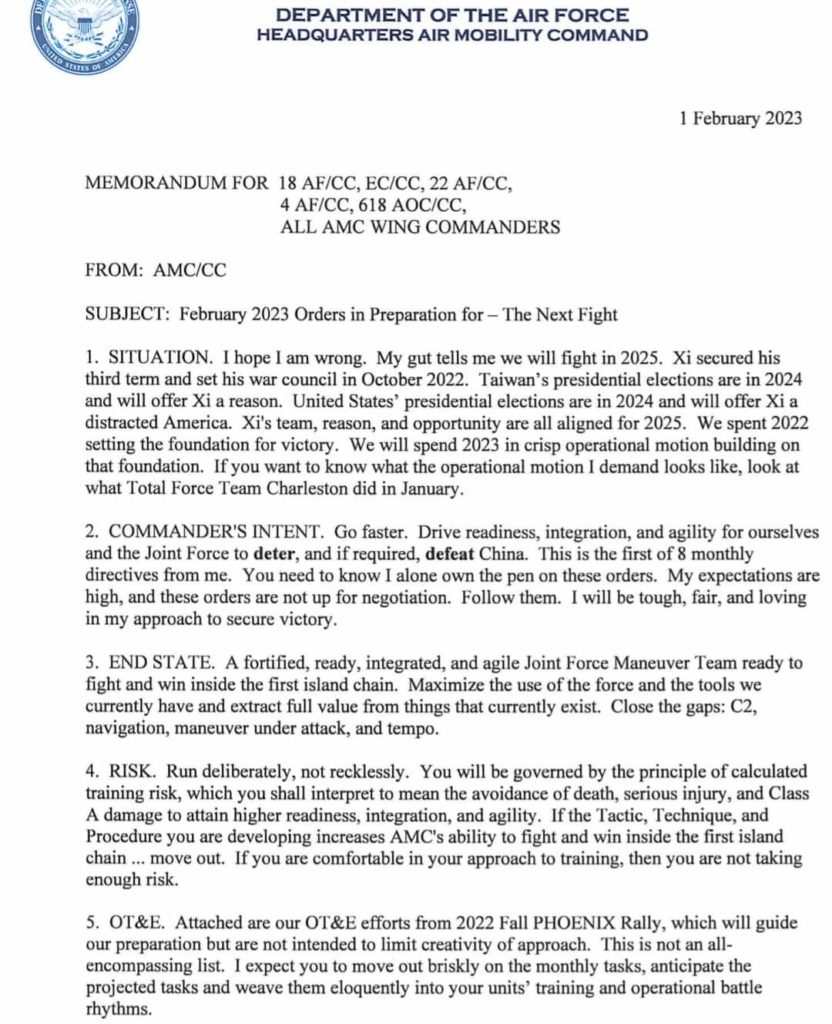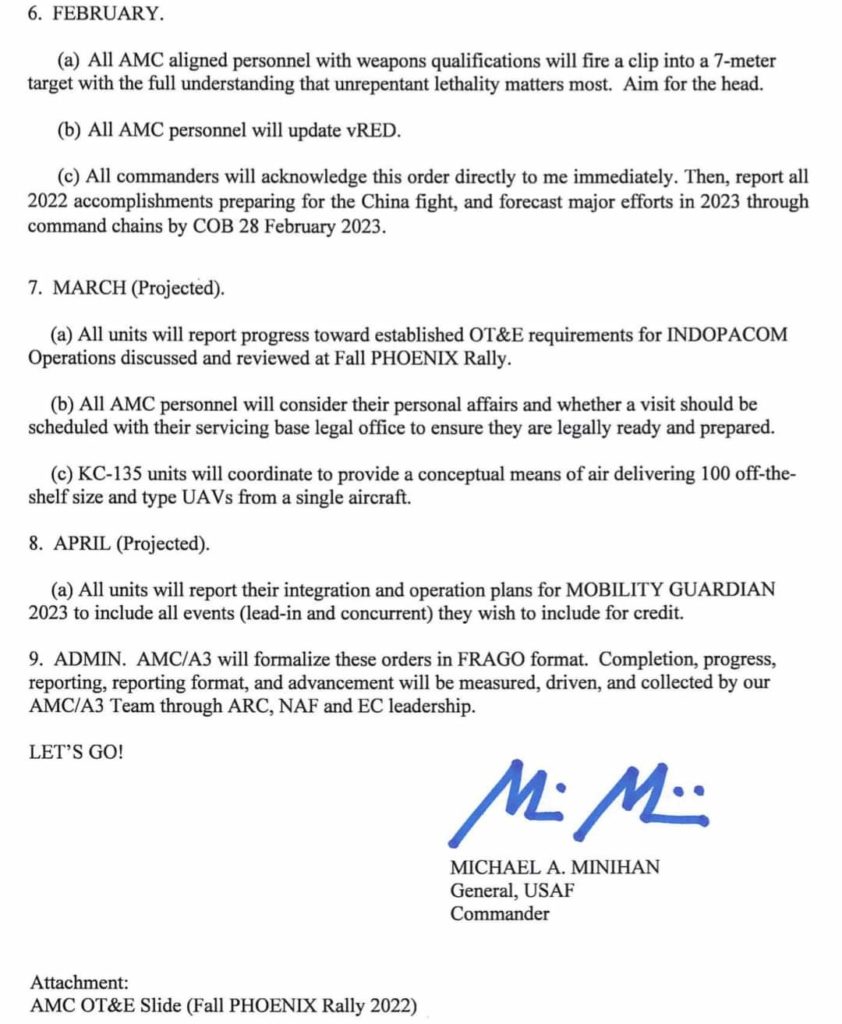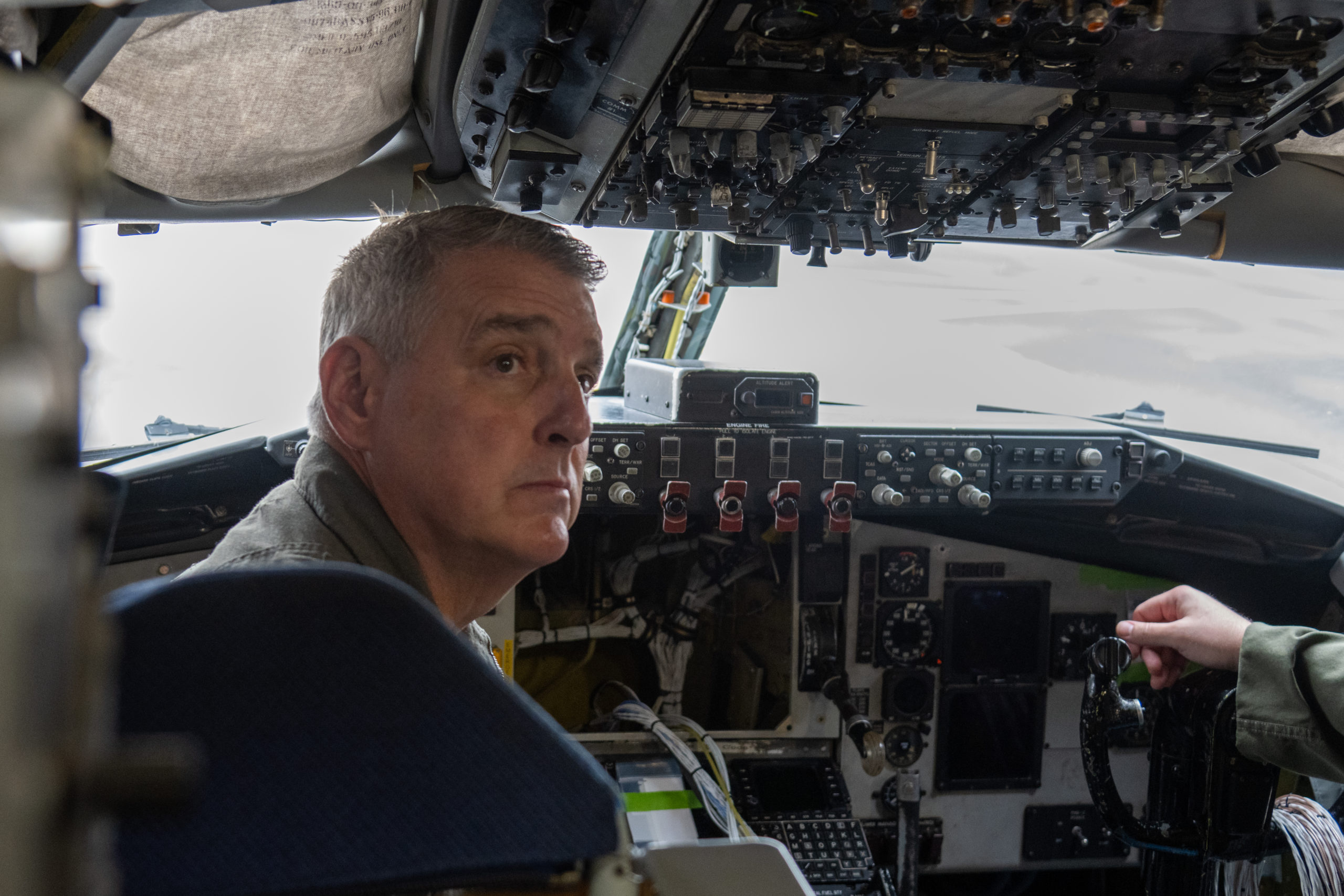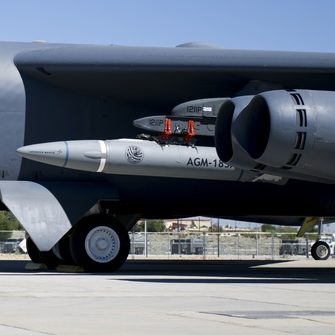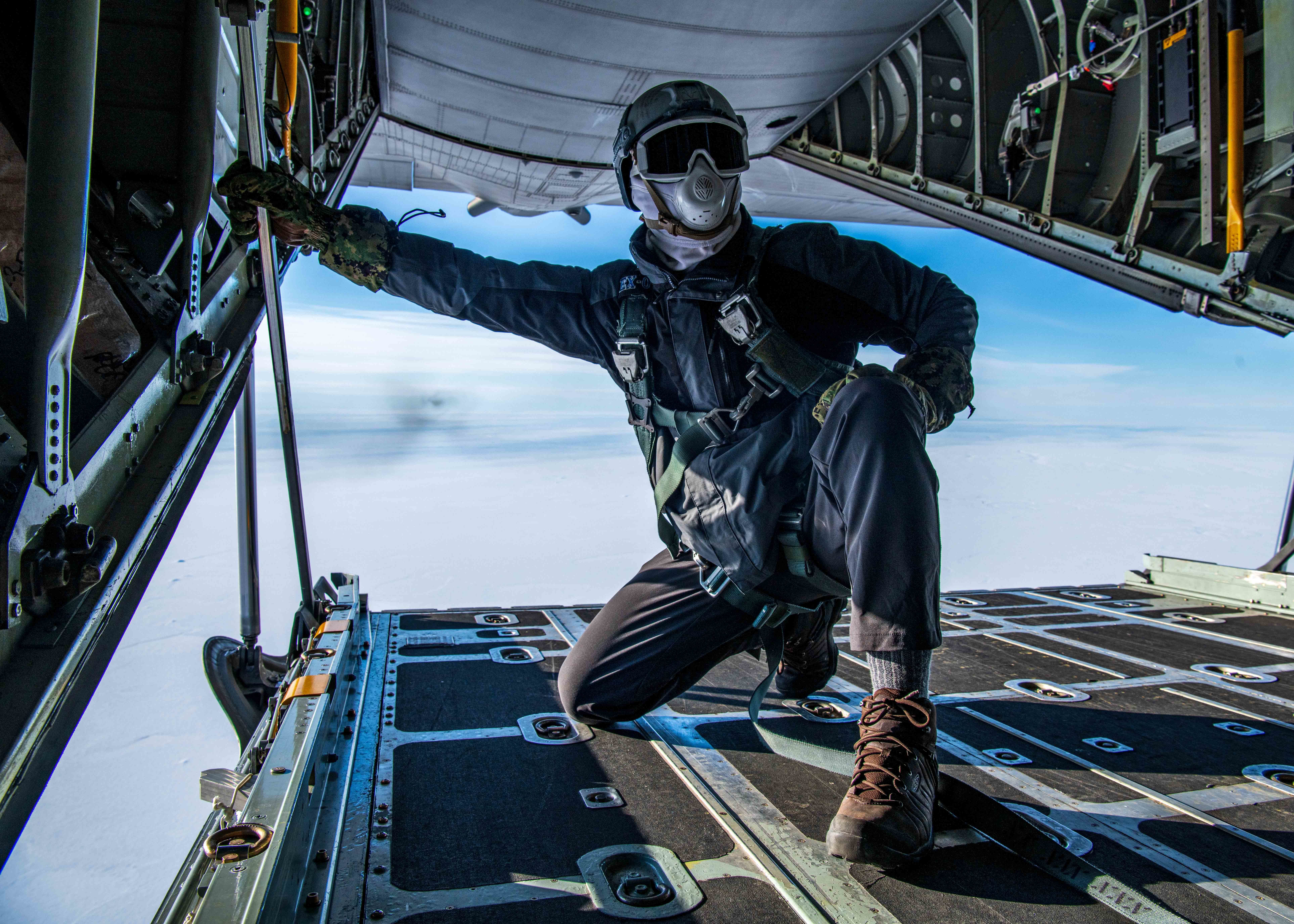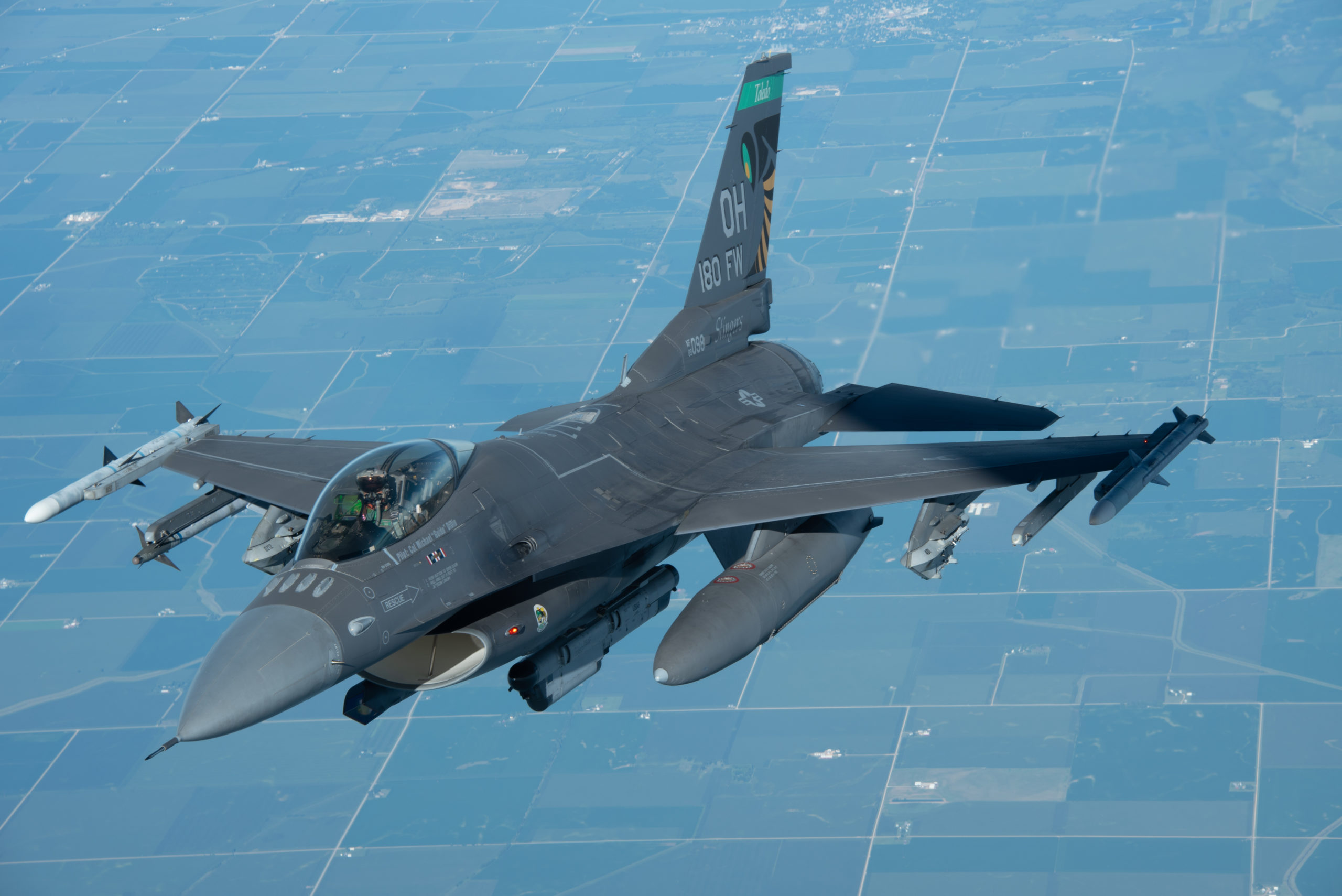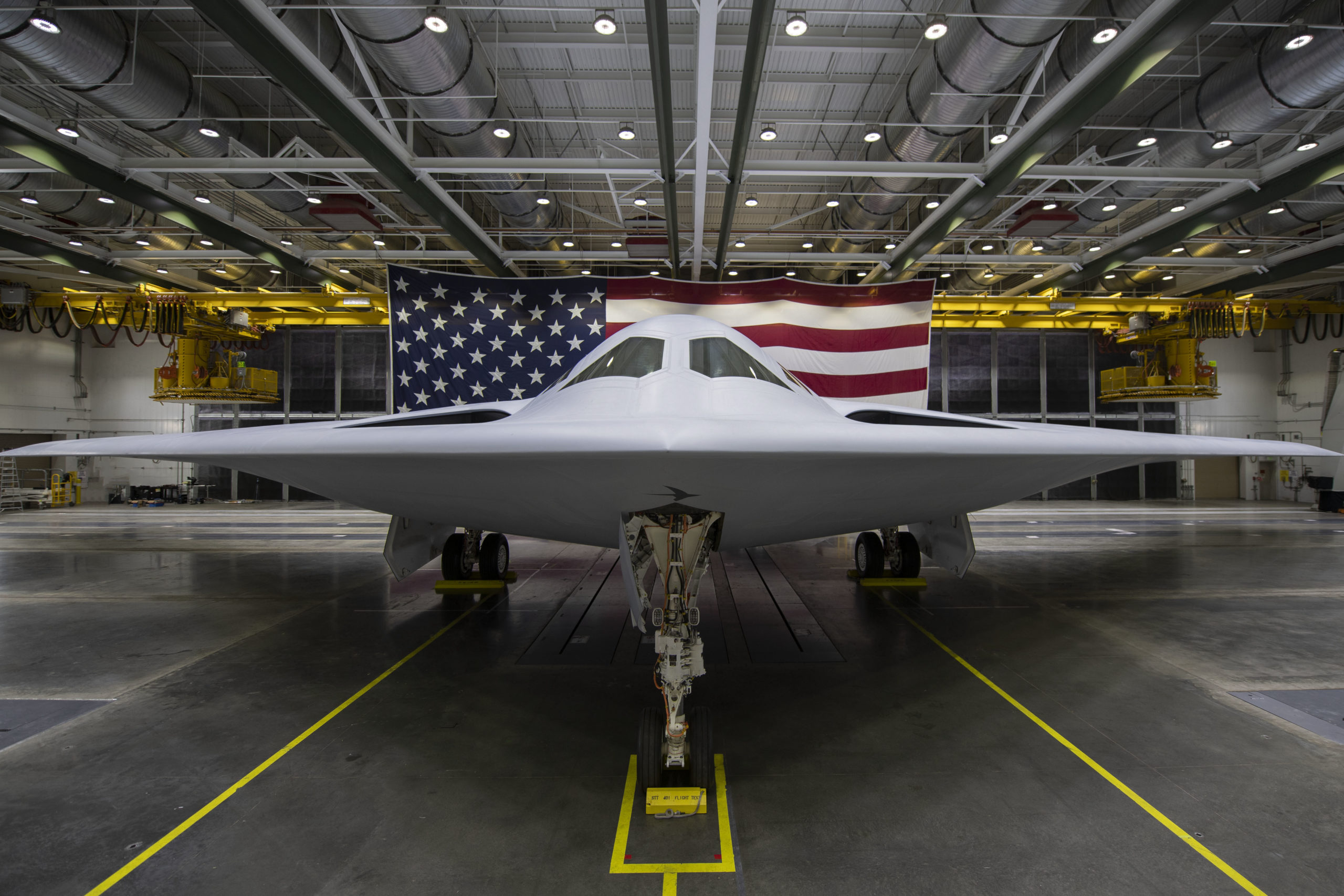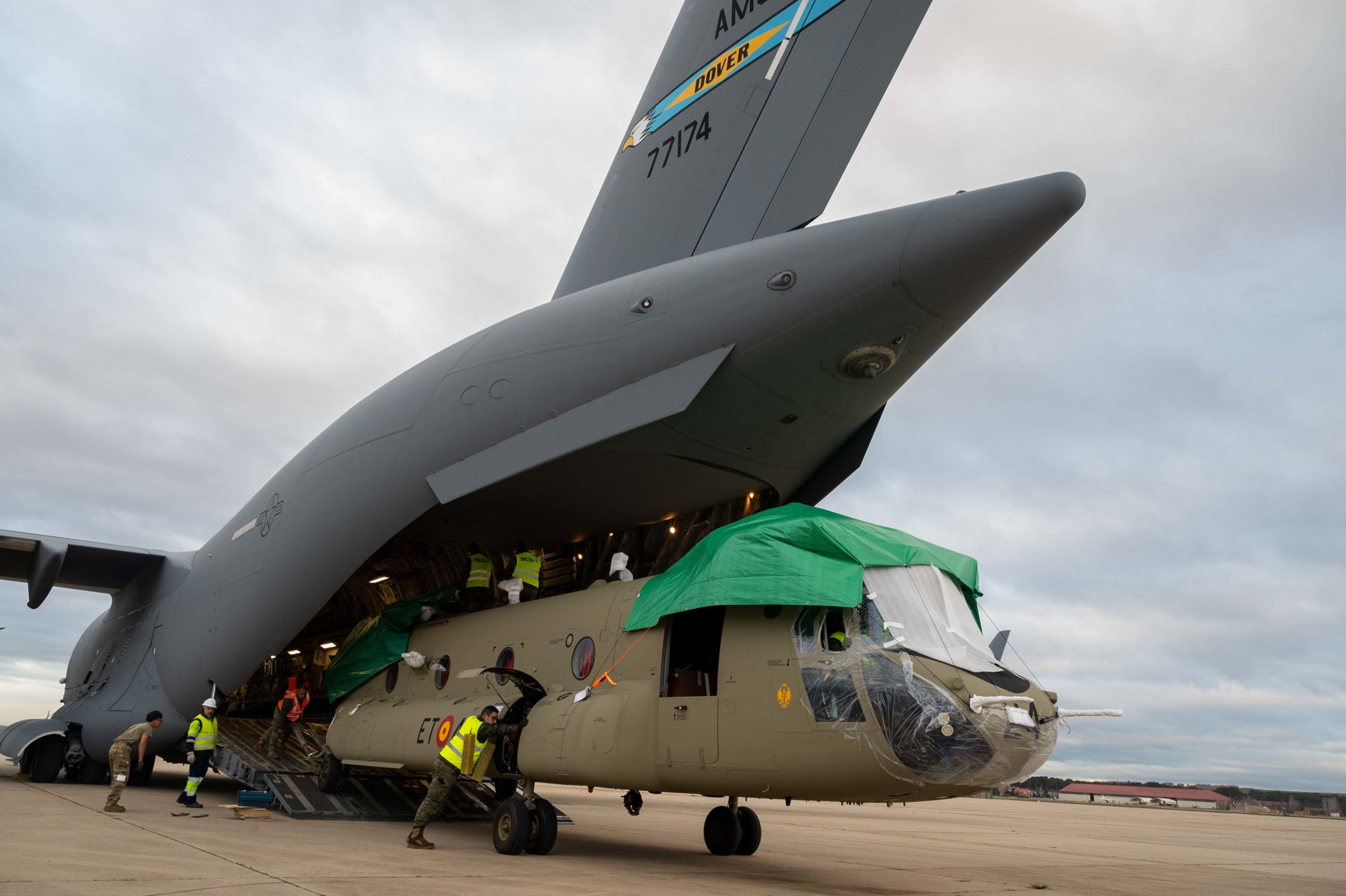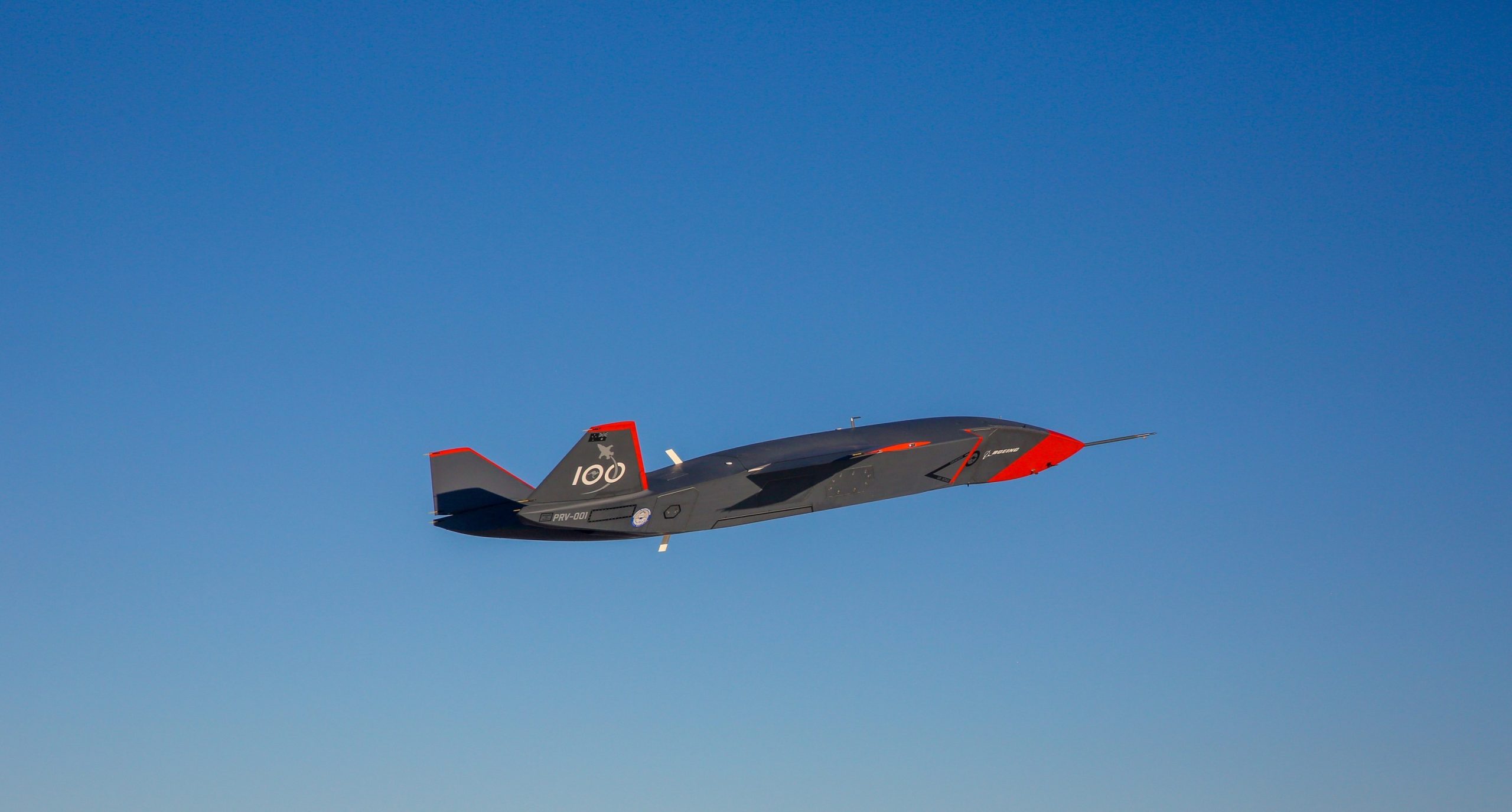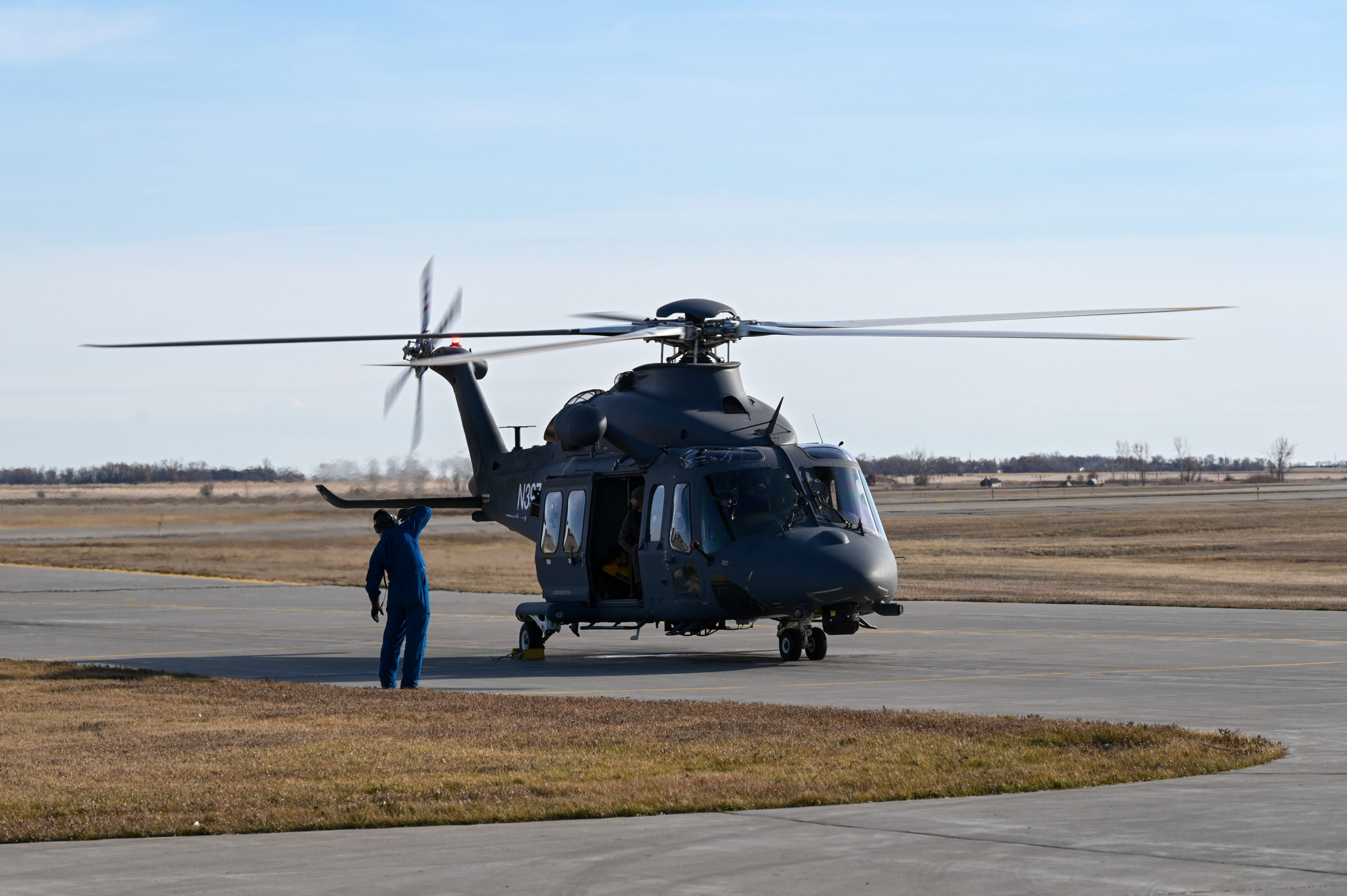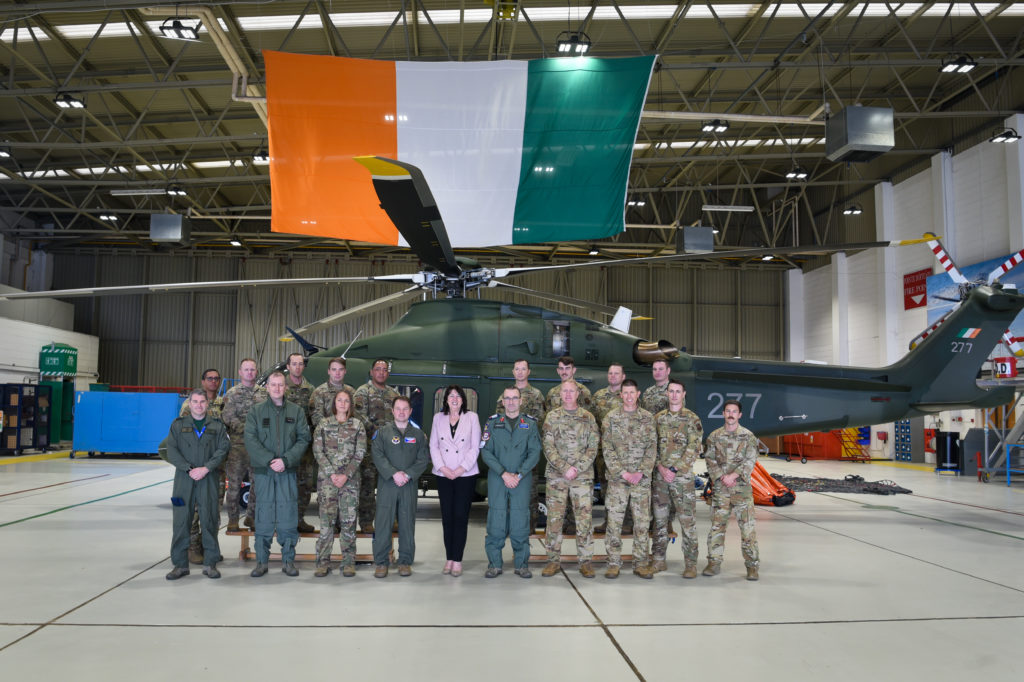Comments by Air Force Gen. Mike Minihan, the head of Air Mobility Command, about a potential war with China in the next few years have generated international headlines and led the Department of Defense to formally distance itself from the remarks.
Minihan, who is known for his energetic, passionate style, prepared a memo saying that Airmen under his command at AMC should prepare to be at war with China within two years.
“I hope I am wrong. My gut tells me we will fight in 2025.” Minihan wrote in the memo, which circulated on social media and was confirmed as authentic by Air & Space Forces Magazine.
“Xi secured his third term and set his war council in October 2022,” Minihan wrote. “Taiwan’s presidential elections are in 2024 and will offer Xi a reason. United States’ presidential elections are in 2024 and will offer Xi a distracted America. Xi’s team, reason, and opportunity are all aligned for 2025.”
The memo was dated Feb. 1 and intended for Minihan’s subordinates at AMC, but it attracted worldwide attention when it made the rounds on social media Jan. 27.
The Department of Defense has sought to make it clear that it does not agree with Minihan’s assessment.
“These comments are not representative of the department’s view on China,” a defense official said in comments emailed to Air & Space Forces Magazine on Jan. 28.
A statement from Pentagon press secretary Air Force Brig. Gen. Patrick S. Ryder reiterated the department’s formal policy on China.
“The National Defense Strategy makes clear that China is the pacing challenge for the Department of Defense and our focus remains on working alongside allies and partners to preserve a peaceful, free and open Indo-Pacific,” Ryder said.
The public disclosure of Minihan’s comments came just before Secretary of Defense Lloyd J. Austin left for South Korea and the Philippines on Jan. 29, as the U.S. tries to warm its relations with nations in the Pacific in a bid to counter Chinese influence. Secretary of State Antony Blinken is due to visit China in early February in an effort to dampen growing tensions and maintain top-level communications with Beijing.
Department of Defense officials often walk a fine line when commenting on the threat posed by China, calling the country America’s ”pacing challenge” that requires the military to reorient itself toward the Pacific, while frequently saying they do not anticipate imminent conflict.
“We believe that [the Chinese] endeavor to establish a new normal, but whether or not that means that an invasion is imminent, I seriously doubt that,” Austin said Jan. 11.
But Minihan’s memo, which was intended to encourage his subordinates to be prepared for a potential contingency, was written in his usual colorful style, ordering Airmen with weapons qualification to brush up on their marksmanship sometime in February and “fire a clip into a 7-meter target with the full understanding that unrepentant lethality matters most.”
“Aim for the head,” Minihan added.
Minihan also made it clear he expects Airmen to follow through on his directions.
“You need to know I alone own the pen on these orders,” Minihan wrote in the memo. “My expectations are high, and these orders are not up for negotiation. Follow them.”
Despite the stir his comments have made, Minihan is not the first four-star uniformed officer to warn that a military confrontation with China could occur in the near future. Adm. Michael M. Gilday, the Chief of Naval Operations, said in October the U.S. should prepare to fight in 2022 or 2023.
“I can’t rule that out,” Gilday said. “I don’t mean at all to be alarmist by saying that, it’s just that we can’t wish that away.”
In 2021, Adm. Phil Davidson, then-head of U.S. Indo-Pacific Command (INDOPACOM), predicted China might take military action against Taiwan by 2027—a timeline that has been dubbed “the Davidson window.”
Minihan has top-level experience in the region. Before becoming the head of the Air Force’s transport and tanker arm, he served as the deputy INDOPACOM commander from 2019-2021.
And since taking command of AMC, Minihan has continued to stress the importance of competition with China. In a roundtable with reporters during AFA’s Air, Space, & Cyber Conference in September, he said his experience in the Indo-Pacific was the main reason he was selected for the job, and in his colorful “Mobility Manifesto” keynote, he stated that Mobility Guardian 23, AMC’s “crown jewel” exercise, will focus on the Pacific.
AMC has also pushed the envelope with record-setting refueling endurance missions and limited aircrew operations.
Minihan’s memo makes it clear he wants to keep pushing, instructing all AMC commanders to “report all 2022 accomplishments preparing for the China fight and forecast major efforts in 2023” by the end of February.
One particular line of effort he wants to pursue involves the KC-135 Stratotanker—the memo calls for KC-135 units to “coordinate to provide a conceptual means of air delivering 100 off-the-shelf size and type UAVs from a single aircraft” by March. It is unclear what the intended use of those drones would be.
